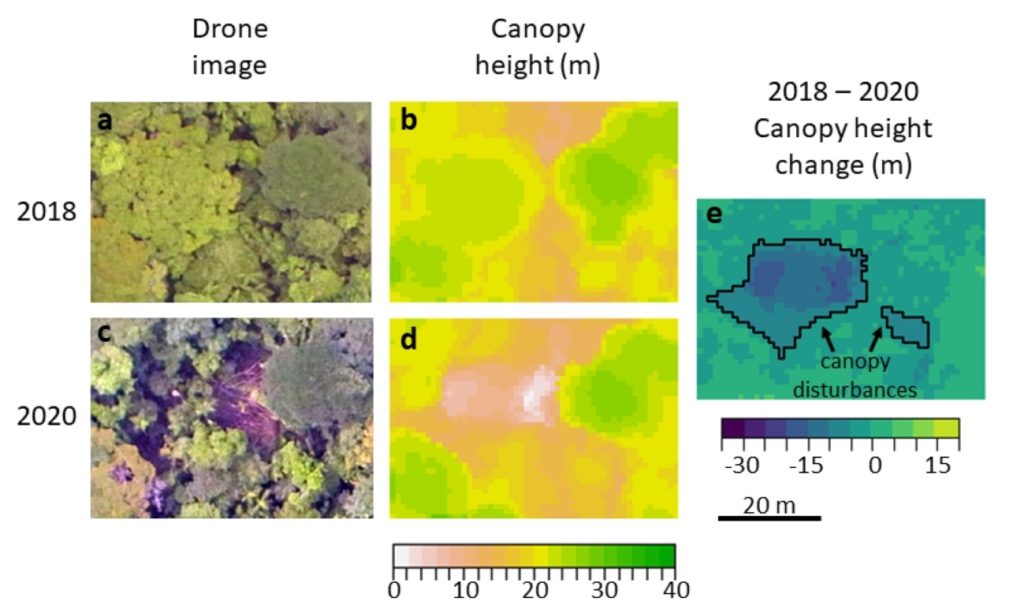A novel dataset of 5 years of canopy disturbances across Barro Colorado Island, Panama, reveals abiotic drivers of spatial variation in disturbances.
The Science
Using 5 years of drone images over Barro Colorado Island, Panama, we identified new canopy disturbances resulting from tree mortality and damage. We show that disturbance rates vary locally depending on soils, topography, and forest age. Disturbances were most strongly associated with certain soil types, and were also higher in older forest, steeper slopes, and local depressions. Additionally, we found that disturbance rates are important for variation in forest height across the landscape.
The Impact
Tree mortality is a major control over tropical forest carbon stocks globally but the strength of associations between abiotic drivers and tree mortality within forested landscapes is poorly understood. Previous studies have shown that mortality rates are important for variation in standing biomass regionally and globally; we show that the same is true on a landscape scale for mature tropical forest and identify abiotic variables that control this variation.
Summary
We used repeat drone photogrammetry across 1500 ha of forest in Central Panama during 2015-2020 to quantify spatial variation in canopy disturbance rates and its predictors. We identified 11,153 canopy disturbances greater than 25 m2 in area, including treefalls, large branchfalls, and standing dead trees, affecting 1.9% of area per year. Soil type, forest age, and topography explained up to 46-67% of disturbance rate variation at spatial grains of 58-64 ha. Further, disturbance rates predicted the proportion of low canopy area across the landscape, and mean canopy height in old growth forests. Thus abiotic factors drive variation in disturbance rates and thereby forest structure at landscape scales.

Features
This study was featured on a EurekAlert press release from AAAS which can be found at https://www.eurekalert.org/news-releases/942548.
Contact
KC Cushman, Postdoctoral Fellow, Smithsonian Tropical Research Institute, cushman.kc@gmail.com
Helene C. Muller-Landau, Staff Scientist, Smithsonian Tropical Research Institute, MullerH@si.edu
Funding
KCC was supported as part of the Next Generation Ecosystem Experiments-Tropics, funded by the U.S. Department of Energy, Office of Science, Office of Biological and Environmental Research; KCC was also supported by the Smithsonian Institution Fellowship Program; MD was supported by the Carbon Mitigation Initiative at Princeton University; data collection was supported by a Smithsonian Institution Competitive Grants Program for Science award to HCM.
Publications
K.C. Cushman, Detto, M., Garcia, M., and H.C. Muller-Landau, “Soils and topography control natural disturbance rates and thereby forest structure in a lowland tropical landscape” Ecology Letters (2022). https://doi.org/10.1111/ele.13978.